On this Day in History ... 29th June
29 Jun is in June.
1509 Death of Margaret Beaufort
1540 Arrest and Attainder of Thomas Cromwell
1644 Battle of Cropredy Bridge
Events on the 29th June
On 29 Jun 430 Fergus Mór aka Great mac Eirc King of Dál Riata was born to Erc King of Dál Riata.
Bede. Bertwald succeeded Theodore in the archbishopric, being abbot of the monastery called Racuulfe [Map], which stands at the northern mouth of the river Genlade. He was a man learned in the Scriptures, and perfectly instructed in ecclesiastical and monastic teaching, yet in no wise to be compared to his predecessor. He was chosen bishop in the year of our Lord 692, on the first day of July, when Wictred (age 23) and Suaebhard were kings in Kent; but he was ordained the next year, on Sunday the 29th of June, by Godwin, metropolitan bishop of Gaul, and was enthroned on Sunday the 31st of August. Among the many bishops whom he ordained was Tobias, a man instructed in the Latin, Greek, and Saxon tongues, and otherwise of manifold learning, whom he consecrated in the stead of Gedmund, bishop of the Church of Rochester, who had died.
On 29 Jun 1398 John II King Aragon was born to Ferdinand I King Aragon (age 17) and Eleanor of Alberquerque Queen Consort Aragon (age 24). Coefficient of inbreeding 4.41%. 
Chronicle of Gregory 1403-1419. 29 Jun 1417. Ande the same year, on Syn Petrys eve and Poule, the Erle of Huntyngdon (age 22) whythe o[th]yr certayne lordys faughtyn whithe carykys of Gene, and dyscomfyte hem, and toke iiij of [th]e grettyste of them and her patronys. And the amerelle [admiral] of them was the Duke of Burbone (age 36), and he was take whithe them whythe alle the tresoure that sholde have wagyd them for halfe a year.

On 29 Jun 1450 Bishop William Ayscough (age 55) was murdered at Edington, Wiltshire by an angry mob.
Warkworth's Chronicle 1465. 29 Jun 1465. Also the same yere, Kynge Herry was takene bysyde a howse of religione in Lancaschyre, by the mene of a blacke monke of Abyngtone1, in a wode called Cletherwode, besyde Bungerly Hyppyngstones2, by Thomas Talbott3,4, sonne and heyre to Sere Edmunde Talbot of Basshalle, and Jhon Talbott his cosyne of Colebry6, withe other moo, whiche disseyvide7, beyngne at his dynere at Wadyngtone Halle8, and caryed to Londone on horse bake, and his lege bownde to the styrope9, and so brought thrugh Londone to the Toure, where he was kepte longe tyme by two squyres and ij. yomen of the crowne, and ther menne, and every manne was suffred to come and speke withe hym, by licence of the kepers,
Note 1. A blacke monke of Abyngtone. In the curious fragment printed by Hearne, at the end of the Chronicle of Sprottus, we are informed that William Cantlow was the name of this rascal. Henry's capture, in the MS. No 5, in the College of Arms, is placed under the year 1465:- "Hoc et anno, circiter festum Apostolorum Petri et Pauli, captus est Henricus Sextus, nuper Rex Anglie, du[c]tus et publice per Chepam Londonie, cum aliis secum captis; ductus usque ad Turrim Londonie, ibique honorifice commendatus custodie mansit. [During this year, around the feast of the Apostles Peter and Paul, Henry VI, the former King of England, was captured, led publicly through Cheapside in London, along with others captured with him; he was taken to the Tower of London, where he remained in custody with honorable commendation.]" Fol. 170, vo,
Note 2. BungEarly Hyppyngstones. This was a ford, obtained by stepping-stones, across the river Ribble. - J.G.N.
Note 3. Thomas Talbott, sonne and heyre to Sere Edmund Talbot of Basshalle. Sir Edmund Talbot, of Bashall, in the parish of Mitton, co. York, died in the 1st Edw. IV. His son, Sir Thomas, was then under age (pedigree in Whitaker's History of Craven, 2d edit. 1812, p. 25); but there can be little doubt that, before his traitorous achievement, he had married Alice, daughter of Sir John Tempest, of Bracewell, under whose protection the unfortunate King was then living. Beside the present reward mentioned in the ensuing note, Sir Thomas Talbot appears to have received a grant of a yearly pension of £40, which was confirmed by Richard III. (pedigree, as above). He survived to the 13th Hen. VII. His father-in-law, Sir John Tempest, was Sheriff of Yorkshire in 18 and 37 Henry VI. (see pedigree of Tempest in Whitaker's Craven, p. 80.) - J.G.N.
Note 4. Thomas Talbott. In the Issue Rolls of the Exchequer of 5 Edw. IV. are the statements of monies paid to this gentleman and others for taking Henry, late de facto et non de jure King of England. It appears that Sir James Haryngton and Sir John Tempest were also concerned in the capture; but the fact of Sir Thomas Talbot being the chief actor is confirmed by the amount of their relative rewards, he receiving £100 and they each 100 marks. Their "costs and charges," amounting to 100 marks, were also paid. John Levesey also received a reward of £20, and William Rogers of Serne and David Colinley, valets of the King's chamber, together £6 13s 4d. On the 9th of July 1465, Edward, in consideration of “magnam et laboriosam diligentiam suam circa captionem et retinentiam magni proditoris, rebellis, et inimici nostri Henrici nuper vocati Regis Henrici Sexti, per ipsum Jacobum factum [his great and laborious diligence in the capture and retention of the great traitor, rebel, and our enemy, Henry, formerly called King Henry VI, was done by James himself]," gave to Sir James Haryngton a grant of Thurland Castle and other lands, formerly belonging to Richard Tunstell5, a partizan of Henry. - Fœdera, XI. 548.
My ancestor, Sir James Haryngton, did once take prisoner, with his party, this poor prince; for which the House of York did graunt him a parcel of lands in the northern counties, and which he was fool enough to lose again, after the battle of Bosworth, when King Henry the Seventh came to the crown." - Haryngton's Nuga Antiquæ, by T. Park, vol. II. pp. 385–86. Cf. Rot. Parl. V. 584, and Devon's Issue Rolls of the Exchequer, p. 489.
Sir James Harrington (age 35) was of BriEarly near Barnsley; a younger brother of Sir John Harrington, of Hornby, who had fallen on the Yorkists ' side at the battle of Wakefield in 1460; their father, Sir Thomas, dying also of his wounds the day after the same battle. Sir James had, in 6 Edw. IV. a grant of £340 from the issues of the county of York. Both he and his younger brother, Sir Robert Harrington, were attainted after the battle of Bosworth in 1 Hen. VII. See further respecting him in Hunter's Deanery of Doncaster, vol. ii. p. 403; to which it may be added that it is probably of him that Leland speaks: "There was a younger brother of the Haryngtons that had in gifte Horneby Castelle [Map]." (Itin. viii. f. 109 a.), that is, he had it for a time to the prejudice of his nieces, the heirs of his elder brother. - J.G.N.
Note 5. The great extent of these possessions may be seen in the Great Roll of the Pipe for 1 Edw. IV. com. Westmorland.
Note 6. Jhon Talbott his cosyne of Colebry. That is, of Salesbury, in the parish of Blackburn, co. Lancaster; see Whitaker's Whalley, 3d edit. 1818, p. 432. A yearly fee of twenty marks was granted by King Edward in consideration of the good and faithful service of Johannes Talbot de Salebury, Esq. "in captura magni adversarii sui Henrici [in the capture of his great adversary, Henry.]," until he received a grant of lands or tenements to the like value; and the same annuity was confirmed to his son Sir John Talbot, of Salebury, by King Richard the Third. See the grant of the confirmation, dated at York 6th June 1484, printed in Baines's History of Lancashire, vol. i. p. 421.—J.G.N.
Note 7. whiche disseyvide. i e. which King Henry, deceived.
Note 8. Wadyngtone Hall. Waddington is a chapelry within the parish of Mitton, little more than a mile from Bashall. It had belonged to the Tempests of Bracewell from the time of Edward I. Dr. Whitaker says (Hist. of Craven, p. 25), “Waddington Hall, though constructed of strong old masonry, has nearly lost all appearance of antiquity. But one room contains the name of King Henry's chamber." In the History of Whalley, p. 473, will be seen an etching of the ruins. At Bracewell also, (which is now likewise in ruins,) in the older stone portion of the house, "is an apartment called King Henry's Parlour; undoubtedly one of the retreats of Henry VI." (Ibid. p. 82.) At Bolton, in the same neighbourhood, after describing a very ancient hall, and its canopy over the high table, Dr. Whitaker adds, "In this very hall, and probably under the same canopy, that unhappy monarch ate the bread of affliction during a retreat, as it is reported by tradition, of several months. An adjoining well retains the name of King Harry, who is said to have directed it to be dug and walled, in its present shape, for a cold bath." It is at Bolton where there are still preserved three relics of King Henry, a boot, a glove, and a spoon; figures of which are engraved in the Gentleman's Magazine for June 1785, and again in the History of Craven, p. 106. The boot and glove are remarkably small, and show, in Dr. Whitaker's words, that "in an age when the habits of the great, in peace as well as war, required perpetual exertions of bodily strength, this unhappy prince must have been equally contemptible from corporeal and from mental imbecility." - J.G.N.
Note 9. His lege bownde to the styrope. One author, and as far as I have been able to find he is the only authority for it, says, that Henry was immediately cast into chains. - Matthæi Palmesii Pisani Continuatio Chronici Eusebiani, ed. Venetiis, 1483, fol. 155, vº. According to some writers, Henry's two religious friends, Drs. Manning and Bedle, were the only companions of his misfortunes. - Cf. Monstrelet, IV. 182.
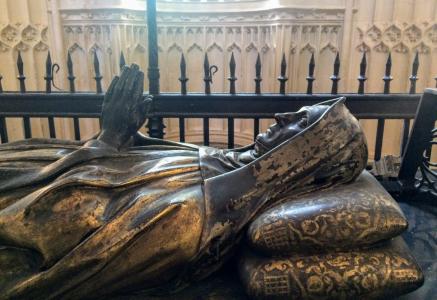 On 29 Jun 1509 Margaret Beaufort Countess Richmond (age 66) died in the Deanery, Westminster Abbey [Map]. She had lived to see the Coronation of her son King Henry VII of England and Ireland and her grandson King Henry VIII of England and Ireland (age 18).
On 29 Jun 1509 Margaret Beaufort Countess Richmond (age 66) died in the Deanery, Westminster Abbey [Map]. She had lived to see the Coronation of her son King Henry VII of England and Ireland and her grandson King Henry VIII of England and Ireland (age 18).

She was buried at the King Henry VII Chapel, Westminster Abbey [Map]. Her tomb was created by Pietro Torrigiano (age 36). The gilded bronze sculpture on the tomb depicts Margaret with her head resting on pillows and her hands raised in prayer, wearing garments characteristic of widowhood; the face was probably sculpted from a death mask. The black marble tomb is embellished with heraldic bronze insignia, including a Yale, her heraldic badge, at her feet.
The inscription written by the humanist scholar Erasmus reads "Margaret, Countess of Richmond, mother of Henry VII, grandmother of Henry VIII, who donated funds for three monks of this abbey, a grammar school in Wimborne, a preacher in the whole of England, two lecturers in Scripture, one at Oxford, the other at Cambridge, where she also founded two colleges, one dedicated to Christ [Map], and the other to St John, the evangelist [Map]".
Image Source: .
Letters 1536. 29 Jun 1536. R. O. 1219. John Smyth to Cromwell.
We have been in the west parts, and surveyed all the Queen's (age 27) lands in Hampshire. Dorsetshire, Devonshire, Somersetshire, and Wiltshire. We have found all the Queen's (age 27) farmers and tenants as glad of her Grace as heart can think, and have been well entertained. On our return to the Court, which will be within 10 or 12 days, I trust you will see we have done her good service, and that the King will be pleased. To ascertain you of the plentifulness of the "newing" of this one year in these parts, it has not been seen that any such yering hath been of late within this realm, as Mr. Richard, your nephew, can inform you. "So that the people doth note this same year to be the year of grace here in England, which men were wont to seek in Rome." Bromeham, Wilts, at Mr. Baynton's house, 29 June.
Hol., pp. 2. Add.: Mr. Secretary. Endd.
On 29 Jun 1537 John Hussey 1st Baron Hussey of Sleaford (age 72) was beheaded at Lincoln, Lincolnshire [Map]. Baron Hussey of Sleaford forfeit.
On 29 Jun 1539 Thomas Howard 3rd Duke of Norfolk (age 66) attended dinner with King Henry VIII of England and Ireland (age 48), Cromwell (age 54) and others as guests of Archbishop Thomas Cranmer (age 49).


Hall's Chronicle 1540. 29 Jun 1540. The morrow after Midsomer day, the king caused the Queen (age 24) to remove to Richmond, purposing it to be more for her health, open air and pleasure: but the sixth day of July, certain Lordes came down into the neither house, which expressly declared causes, that the marriage was not lawful, and in conclusion, the matter was by the Convocation clearly determined, that the king might lawfully marry where he would, and so might she: and so were they clearly divorced and separated, and by the Parliament enacted and concluded, that she should be taken no more as Queen, but called the Lady Anne of Cleve.
House of Lords Journal Volume 1 29 June 1540. 29 Jun 1540. Item Billa Attincture Thome Cromwell, Comitis Essex (age 55), de Crimine Heresis et Lese Majestatis, per Communes de novo concepta; et assens. et simul cum provisione eidem annexa.
Note. This is the confirmation of the attainder of Thomas Cromwell 1st Earl Essex (age 55).
On 20 Jun 1541 Thomas Fiennes 9th Baron Dacre Gilsland (age 26) was tried for the murder of John Busbrig, servant of Nicholas Pelham (age 24) on whose land they were poaching on 30 Apr 1541. Thomas Howard 3rd Duke of Norfolk (age 68) was appointed Lord High Steward for the trial.

On 29 Jun 1541 he was hanged at Tyburn [Map]. He was buried at St Sepulchre without Newgate Church. Baron Dacre Gilsland forfeit. His son Gregory (age 1) would be restored to the title in 1558.
Note. Hall's Chronicle says strangled.
Hall's Chronicle 1541. And so the twenty and nine day of June , being Saint Peter’s day at afternoon, he was led on foot, between the two Sheriffs of London, from the Tower through the city to Tyburn [Map], where he was strangled, as common murderers are, and his body buried in the Church of Saint Sepulchres. The cause of the death of this noble man, and the other gentlemen, was a murder of a simple man and an unlawful assembly made in Sussex. Great moan was made for them all, but most especially for Mantell, who was as witty, and toward a gentleman, as any was in the realm, and a man able to have done good service.
Chronicle of Greyfriars. 29 Jun 1541. And the 29th of the same monyth was Lord Dacres of the South (age 26) led with the sheriffs of London unto Tyborne at after-none, and there hanged for the new acte that was made, and browte home agayne in the carte unto St Sepulchres and ther buried.
Note. Lord Dacre was hung for a murder committed in Sussex, as were his three companions named in the next paragraph.
Letters and Papers 1541. That afternoon [Chapus appears here to have the wrong day; other sources say 29 Jun 1541 i.e. St Peter's Day] two gentlemen were hung [A reference to two of John Mantell, John Frowds, George Roidon, Thomas Isleie, and two yeomen Richard Middleton and John Goldwell], one of whom had an income of over 12,000 ducats a year, and was the handsomest and best bred man in England, only 25 years old and married to a niece of the Duke of Norfolk (age 68). He was sentenced for having belonged to a set of eight rakish youths, one of whom had killed a poor old man in an unpremeditated fray. For the same cause lord Dacres (age 26) also, son1 of the Duke of Norfolk's (age 68) sister, and cousin of this Queen (age 18), 23 years old and possessing a property of about 5,000 ducats a year, was hung from the most ignominious gibbet, and for greater shame dragged through the streets to the place of execution, to the great pity of many people, and even of his very judges, who wept when they sentenced him, and in a body asked his pardon of the King. But the thing which astonished people most was, that, the same day lord Dacres was hung, another young man (age 28), son of the Treasurer of the Royal household (age 56), who was one of those present at the old man's death, was freely pardoned, though he had been already tried for some like misdemeanour.


At the same time in the North, Sir John Neville (deceased) and about 60 more, among whom at least 25 were ecclesiastics, were executed for the conspiracy of which Chapuys wrote some time ago. Has just heard of the arrival of a Polish gentleman with eight or ten servants. Will endeavour to discover who he is and what he comes for. London, 2 July 1541. Original at Vienna.
Note 1. Thomas Fiennes 9th Baron Dacre Gilsland (age 26), Lord Dacre, was the grandson of Anne Bourchier Baroness Dacre of Gilsland who was the maternal half-sister of Thomas Howard 3rd Duke of Norfolk (age 68); Anne and Thomas' mother was Elizabeth Tilney Countess of Surrey.
On 29 Jun 1583 Anthony Gell (age 63) died. He was buried in St Mary's Church, Wirksworth [Map]. Elizabethan Period.
Anthony Gell: In 1520 he was born to Ralph Gell.
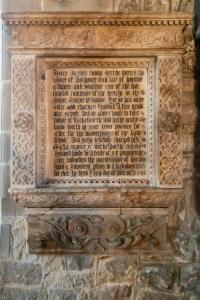
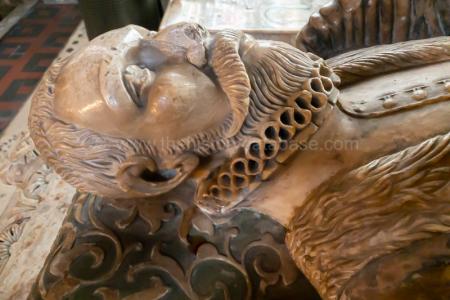
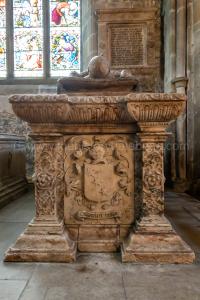
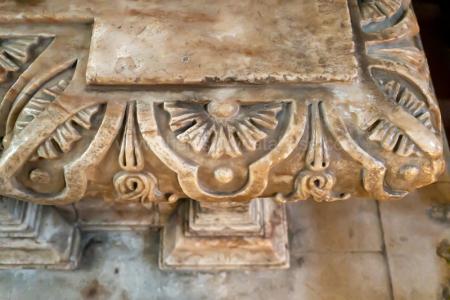
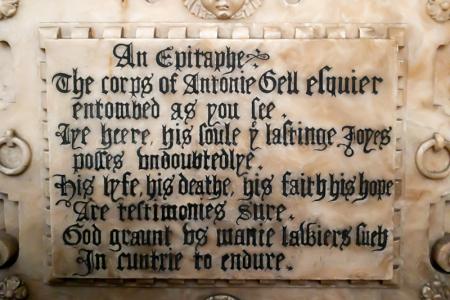
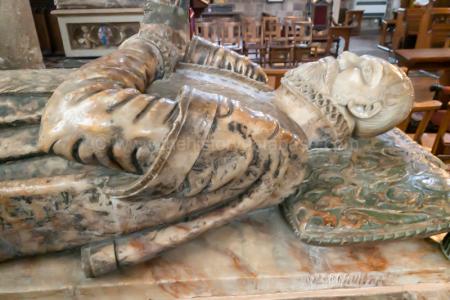
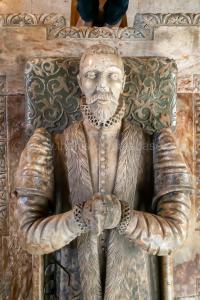
On 29 Jun 1596 the fleet arrived in Cádiz Spain. In the Bay of Cádiz some 40 Spanish ships, ranging from galleys to galleons, as well as 16 other vessels from the Spanish convoy, which were disarmed and ready to depart for the West Indies. These unarmed vessels immediately fled to Puerto Real for refuge.
On 29 Jun 1611 another tranche of Baronets were created by King James I of England and Ireland and VI of Scotland (age 45) ...
Robert Cholmondeley 1st Earl Leinster (age 27) was created 1st Baronet Cholmondley of Cholmondeley. Catherine Stanhope Countess Leinster by marriage Lady Cholmondley of Cholmondeley.

Anthony Cope 1st Baronet (age 63) was created 1st Baronet Cope of Hanwell in Oxfordshire. Anne Paston Lady Hanwell (age 58) by marriage Lady Cope of Hanwell in Oxfordshire.
William Constable 1st Baronet (age 31) was created 1st Baronet Constable of Flamborough in Yorkshire.
Robert Bruce Cotton 1st Baronet (age 40) was created 1st Baronet Cotton of Conington in Huntingdonshire.
Edward Hales 1st Baronet (age 35) was created 1st Baronet Hales of Woodchurch and Tunstall.
James Harrington 1st Baronet (age 69) was created 1st Baronet Harington of Ridlington in Rutlandshire.
Edward Hussey 1st Baronet (age 25) was created 1st Baronet Hussey of Honington in Lincolnshire.
William Kniveton 1st Baronet (age 51) was created 1st Baronet Kniveton of Mercaston in Derbyshire.
Henry Lee 1st Baronet (age 40) was created 1st Baronet Lee of Quarrendon in Buckinghamshire.
Thomas Mildmay 1st Baronet (age 38) was created 1st Baronet Mildmay of Moulsham.
John Molyneux 1st Baronet (age 30) was created 1st Baronet Molyneux of Teversall in Nottinghamshire.
Richard Molyneux 1st Baronet (age 51) was created 1st Baronet Molyneux of Sefton. Frances Gerard Lady Molyneux (age 42) by marriage Lady Molyneux of Sefton.
Estrange Mordaunt 1st Baronet (age 39) was created 1st Baronet Mordaunt of Massingham Parva.
Richard Musgrave 1st Baronet (age 26) was created 1st Baronet Musgrave of Hartley Castle in Westmoreland.
John Savage 1st Baronet (age 61) was created 1st Baronet Savage of Rocksavage in Cheshire.
Henry Savile 1st Baronet (age 32) was created 1st Baronet Savile of Methley.
William Sedley 1st Baronet (age 53) was created 1st Baronet Sedley of Ailesford in Kent.
Edward Seymour 1st Baronet (age 48) was created 1st Baronet Seymour of Berry Pomeroy. Elizabeth Champernowne Baroness Seymour by marriage Lady Seymour of Berry Pomeroy.
George St Paul 1st Baronet (age 49) was created 1st Baronet St Paul in Snarford in Lincolnshire. Frances Wray Countess Warwick by marriage Lady St Paul in Snarford in Lincolnshire.
John Tufton 1st Baronet (age 67) was created 1st Baronet Tufton of Hothfield. Christian Browne Lady Tufton by marriage Lady Tufton of Hothfield.
William Twysden 1st Baronet (age 45) was created 1st Baronet Twysden of Roydon in Kent. Anne Finch Lady Twysden (age 37) by marriage Lady Twysden of Roydon in Kent.

John Wentworth 1st Baronet (age 28) was created 1st Baronet Wentworth of Gosfield. Catherine Finch Lady Wentworth (age 23) by marriage Lady Wentworth of Gosfield.

William Wentworth 1st Baronet (age 49) was created 1st Baronet Wentworth of Wentworth Woodhouse in Yorkshire.
Henry Willoughby 1st Baronet (age 31) was created 1st Baronet Willoughby of Risley in Derbyshire.
Philip Wodehouse 1st Baronet was created 1st Baronet Woodhouse of Wilberhall. Note. Date uncertain.
Richard Worsley 1st Baronet (age 22) was created 1st Baronet Worsley of Appuldurcombe.
John Wynn 1st Baronet (age 58) was created 1st Baronet Wynn of Gwydir.
On 29 Jun 1621 ...
Edward Montagu 1st Baron Montagu (age 58) was created 1st Baron Montagu of Boughton in Northamptonshire.
Thomas Palmer 1st Baronet (age 81) was created 1st Baronet Palmer of Wingham in Kent. Margaret Poley Lady Palmer (age 79) by marriage Lady Palmer of Wingham in Kent.
On 29 Jun 1640 Elizabeth Butler Countess Chesterfield was born to James Butler 1st Duke Ormonde (age 29) and Elizabeth Preston Duchess Ormonde (age 24).

On 29 Jun 1644 the Battle of Cropredy Bridge was fought near Banbury, Oxfordshire [Map].
Robert Howard (age 18) fought.
James Harington 3rd Baronet (age 36) led out a brigade of suburban Trained Bands, the Tower Hamlets Regiment and the Southwark White Auxiliaries and the Westminster Yellow Auxiliaries, to join William Waller (age 47) in the campaign that culminated at the Battle of Cropredy Bridge.
In Jun 1660 King Charles II of England Scotland and Ireland (age 30) rewarded those who supported his Restoration ...
6th William Wray 1st Baronet (age 35) and John Talbot of Lacock (age 29) were knighted.
7th Geoffrey Palmer 1st Baronet (age 62) was created 1st Baronet Palmer of Carlton in Northampton
7th Orlando Bridgeman 1st Baronet (age 54) was created 1st Baronet Bridgeman of Great Lever in Lancashire.
7th John Langham 1st Baronet (age 76) was created 1st Baronet Langham of Cottesbrooke in Northamptonshire.
11th Henry Wright 1st Baronet (age 23) was created 1st Baronet Wright of Dagenham. Ann Crew Lady Wright by marriage Lady Wright of Dagenham.
13th Nicholas Gould 1st Baronet was created 1st Baronet Gould of the City of London.
14th Thomas Allen 1st Baronet (age 27) was created 1st Baronet Allen of Totteridge in Middlesex.
18th Thomas Cullum 1st Baronet (age 73) was created 1st Baronet Cullum of Hastede in Suffolk.
19th Thomas Darcy 1st Baronet (age 28) was created 1st Baronet Darcy of St Osith's.
22nd Robert Cordell 1st Baronet was created 1st Baronet Cordell of Long Melford.
22nd John Robinson 1st Baronet (age 45) was created 1st Baronet Robinson of London. Anne Whitmore Lady Robinson (age 48) by marriage Lady Robinson of London.
25th William Bowyer 1st Baronet (age 47) was created 1st Baronet Bowyer of Denham Court. Margaret Weld Lady Bowyer (age 43) by marriage Lady Bowyer of Denham Court.
25th Thomas Stanley 1st Baronet (age 63) was created 1st Baronet Stanley of Alderley in Cheshire.
26th Jacob Astley 1st Baronet (age 21) was created 1st Baronet Astley of Hill Morton.
27th William Wray 1st Baronet (age 35) was created 1st Baronet Wray of Ashby in Lincolnshire. Olympia Tufton Lady Ashby (age 36) by marriage Lady Wray of Ashby in Lincolnshire.
28th Oliver St John 1st Baronet (age 36) was created 1st Baronet St John of Woodford in Northamptonshire.
29th Ralph Delaval 1st Baronet (age 37) was created 1st Baronet Delaval of Seaton in Northumberland. Anne Leslie Lady Delaval by marriage Lady Delaval of Seaton in Northumberland.
30th Andrew Henley 1st Baronet (age 38) was created 1st Baronet Henley of Henley in Somerset.
Pepy's Diary. 29 Jun 1663. Up betimes and to my office, and by and by to the Temple [Map], and there appointed to meet in the evening about my business, and thence I walked home, and up and down the streets is cried mightily the great victory got by the Portugalls against the Spaniards, where 10,000 slain, 3 or 4,000 taken prisoners, with all the artillery, baggage, money, &c., and Don John of Austria (age 34)1 forced to flee with a man or two with him, which is very great news.
Note 1. He was natural son of Philip IV., King of Spain (age 58), who, after his father's death in 1665, exerted his whole influence to overthrow the Regency appointed during the young king's minority. B.
Pepy's Diary. 29 Jun 1665. So home, calling at Somersett House [Map], where all are packing up too: the Queene-Mother (age 55) setting out for France this day to drink Bourbon waters this year, she being in a consumption; and intends not to come till winter come twelvemonths2. So by coach home, where at the office all the morning, and at noon Mrs. Hunt dined with us. Very merry, and she a very good woman. To the office, where busy a while putting some things in my office in order, and then to letters till night. About 10 a'clock home, the days being sensibly shorter before I have once kept a summer's day by shutting up office by daylight; but my life hath been still as it was in winter almost. But I will for a month try what I can do by daylight. So home to supper and to bed.
Note 1. According to the Bills of Mortality, the total number of deaths in London for the week ending June 27th was 684, of which number 267 were deaths from the plague. The number of deaths rose week by week until September 19th, when the total was 8,297, and the deaths from the plague 7,165. On September 26th the total had fallen to 6,460, and deaths from the plague to 5,533 The number fell gradually, week by week, till October 31st, when the total was 1,388, and deaths from the plague 1,031. On November 7th there was a rise to 1,787 and 1,414 respectively. On November 14th the numbers had gone down to 1,359 and 1,050 respectively. On December 12th the total had fallen to 442, and deaths from the plague to 243. On December 19th there was a rise to 525 and 281 respectively. The total of burials in 1665 was 97,506, of which number the plague claimed 68,596 victims.
Note 2. The Queen-Mother (age 55) never came to England again. She retired to her chateau at Colombes, near Paris, where she died in August, 1669, after a long illness; the immediate cause of her death being an opiate ordered by her physicians. She was buried, September 12th, in the church of St. Denis. Her funeral sermon was preached by Bossuet. Sir John Reresby speaks of Queen Henrietta Maria (age 26) in high terms. He says that in the winter, 1659-60, although the Court of France was very splendid, there was a greater resort to the Palais Royal, "the good humour and wit of our Queen Mother (age 55), and the beauty of the Princess Henrietta (age 21) her daughter, giving greater invitation than the more particular humour of the French Queen (age 26), being a Spaniard". In another place he says: "Her majesty had a great affection for England, notwithstanding the severe usage she and hers had received from it. Her discourse was much with the great men and ladies of France in praise of the people and of the country; of their courage, generosity, good nature; and would excuse all their miscarriages in relation to unfortunate effects of the late war, as if it were a convulsion of some desperate and infatuated persons, rather than from the genius and temper of the Kingdom" ("Memoirs of Sir John Reresby", ed. Cartwright, pp. 43, 45).
Calendars. 29 Jun 1665. 82. Comr. Thomas Middleton to Sam. Pepys (age 32). Progress and dispatch of ships; 45 carpenters are to be discharged; the ropemakers have discharged themselves for want of money, and gone into the country to make hay. Asks how many sorts of sails shall be made. [Adm. Paper, 1 pages.]
Pepy's Diary. 29 Jun 1665. Up and by water to White Hall, where the Court full of waggons and people ready to go out of towne. To the Harp and Ball, and there drank and talked with Mary, she telling me in discourse that she lived lately at my neighbour's, Mr. Knightly, which made me forbear further discourse. This end of the towne every day grows very bad of the plague. The Mortality Bill is come to 2671 which is about ninety more than the last: and of these but four in the City, which is a great blessing to us.
On 29 Jun 1688 the seven bishops were tried at the King's Bench. Robert Sawyer (age 55) acted for the defence. They were found not guilty. Their acquittal resulted in wild celebrations throughout London
Evelyn's Diary. 29 Jun 1688. They appeared; the trial lasted from nine in the morning to past six in the evening, when the jury retired to consider of their verdict, and the Court adjourned to nine the next morning. The jury were locked up till that time, eleven of them being for an acquittal; but one (Arnold, a brewer) would not consent. At length he agreed with the others. The Chief Justice, Wright (age 54), behaved with great moderation and civility to the Bishops. Alibone, a Papist, was strongly against them; but Holloway and Powell (age 56) being of opinion in their favor, they were acquitted. When this was heard, there was great rejoicing; and there was a lane of people from the King's Bench [Map] to the water side, on their knees, as the Bishops passed and repassed, to beg their blessing. Bonfires were made that night, and bells rung, which was taken very ill at Court, and an appearance of nearly sixty Earls and Lords, etc., on the bench, did not a little comfort them; but indeed they were all along full of comfort and cheerful.
On 29 Jun 1779 Anton Raphael Mengs (age 51) died.
Archaeologia Volume 15 Section XI Page 126. Heytesbury, June 29, 1803.
Sir
On my return from Stonehenge last Wednesday, (where I had been to open some barrows with Mr. Coxe) I was surprised to find a large string of beads, which had been taken out of the large barrow on Upton-Lovell Downs near you. This barrow is bell-shaped, surrounded with a deep ditch, and small vallum, the diameter at the base is 105 feet, its elevation 11 feet, and from its large size is called Upton Great Barrow [Map]. [e] On enquiry I found it had been opened in my absence by a labouring man, who is often employed, in digging flints on those Downs for the turnpike roads; his views were the hopes of finding treasure, but on finding nothing but burnt bones and the beads, he sent for me; but being absent, my brother and one of my daughters went, and having persuaded him to defist from further pursuits till my return, they brought away the beads. When I saw the barrow, I found he had made a large trench near the centre, when, at the depth of nearly eleven feet, he found a circular cist in the native chalk; this contained burnt human bones, with which were deposited 48 beads; of these 16 were of green and blue glass [f] "in long pieces notched between, so as to resemble a string of beads," 5 were of canal-coal or jet, and the remaining 57 of red amber; among the latter was one of a large size; the very small ones fell to pieces soon after their exposure to the air, but the large ones are in good preservation. Mr. Crocker has drawn a sample of each very accurately, as you will see on comparing. A neighbouring farmer, Mr. Baker of Chiltern, having brought two labourers to assist; these with the same man worked all day in making further researches, but we were not able to discover any thing else, except a variety of animal bones; and abundance of black ashes and charred wood. I am therefore of opinion that this large tumulus was erected over the remains of some illustrious female, for such the beads indicate; had there been more than one interment, I think we should certainly have discovered them, as we made some very large sections in those parts of the barrow where they are generally found.
I am very respectfully.
Sir,
Your faithful Servant,
William Cunnington.
Note e. I have accompanied this with a drawing of the barrow, and part of the beads, by Mr. Crocker, and request your acceptance of them.
Note f. Theese are finely coated with the Armatura acquired by lying a length of time in the earth.
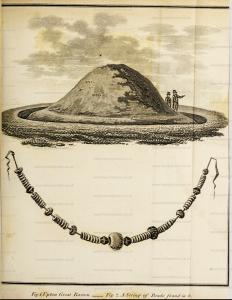
After 29 Jun 1820. Church of St Michael and All Angels, Edenham [Map]. Monument to Peter Burrell Baron Willoughby, 1st Baron Gwydyr (deceased) sculpted by Joseph Nollekens (age 82). Freestanding square marble shaft bears a bust.
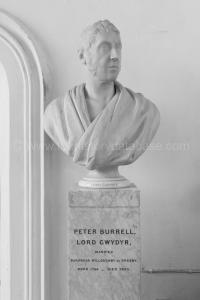
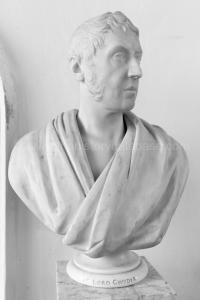
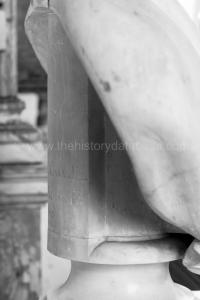
On 29 Jun 1841 Frederica Mecklenburg Strelitz Queen Consort Hanover (age 63) died.
The Diary of George Price Boyce 1855-1857. 29 Jun 1857. Rossetti (age 29) and his friend Morris (age 23) (of 17 Red Lion Square), called on me in Buckingham St. and had tea. R. told me he was sure it was a man of the name of Sandys (age 28) who had done the caricature.
On 29 Jun 1885 Camilla "Camille" Clifford was born.
On 29 Jun 1902 Simon Elwes was born to Gervase Elwes Singer (age 35) and Winefride Mary Elizabeth Feilding (age 33) at Hothorpe Hall, Northamptonshire.
After 13 May 1948 Kathleen "Kick" Kennedy (age 28) was buried at Cavendish Plot, St Peter's Church, Edensor [Map]. Joseph Patrick Kennedy (age 59), her father, was the only Kennedy family member to attend.
On Saturday 29 Jun 1963, around four in the afternoon, her grave was visited by her elder brother President John Fitzgerald Kennedy (age 30), some five months before his assassination. He was travelling from to London for a meeting with the British Prime Minister when he made a detour landing at and then travelling by helicopter to St Peter's Church, Edensor [Map]. He laid a wreath which he had brought from Ireland. Present at the wreath laying was his sisters Eunice Mary Kennedy (age 26) and Jean Ann Kennedy (age 20), and the Duke (age 53) and Duchess (age 52) of Devonshire.

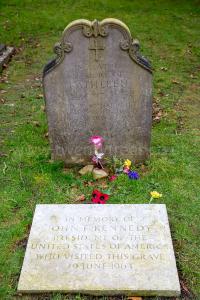
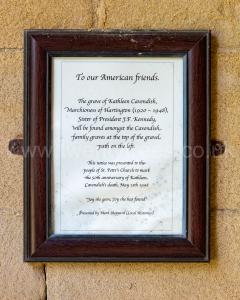
Births on the 29th June
On 29 Jun 430 Fergus Mór aka Great mac Eirc King of Dál Riata was born to Erc King of Dál Riata.
On 29 Jun 1333 Isabel St John 4th Baroness St John of Basing was born to Hugh St John 2nd Baron St John of Basing (age 23) and Isabel Wake Baroness St John Basing at Basing, Hampshire.

Before 29 Jun 1344 Richard Champernoun was born.
On 29 Jun 1398 John II King Aragon was born to Ferdinand I King Aragon (age 17) and Eleanor of Alberquerque Queen Consort Aragon (age 24). Coefficient of inbreeding 4.41%. 
On 29 Jun 1443 Anthony Browne was born to Thomas Browne (age 41) and Eleanor Fitzalan at Betchworth Castle.

On 29 Jun 1463 John Montfort was born to Francis Montfort II Duke Brittany (age 30) and Margaret Montfort Duchess Brittany (age 20). Coefficient of inbreeding 5.61%. 
On 29 Jun 1475 Beatrice Este was born to Ercole Este I Duke Ferrara (age 43).
On 29 Jun 1528 Julius Duke of Brunswick-Lüneburg was born to Henry "The Younger" IV Duke of Brunswick-Lüneburg (age 38).
On 29 Jun 1543 Christine Hesse was born to Landgrave Philip I of Hesse (age 38) and Christine of Saxony (age 37).
On 29 Jun 1546 Dorothea Oldenburg Duchess Brunswick-Lüneburg was born to Christian III King Denmark (age 42) and Dorothea of Saxe Lauenburg Queen Consort Denmark and Norway (age 35) at Kolding.
On 29 Jun 1552 Elizabeth Spencer Baroness Hunsdon and Eure was born to John Spencer (age 28) and Katherine Kitson (age 28) at Althorp House, Northamptonshire [Map].

On 29 Jun 1566 Henry Yelverton was born to Christopher Yelverton (age 30) and Margaret Catesby (age 23).
On 29 Jun 1590 Edward Rodney was born to John Rodney (age 39) and Jane Seymour.
On or before 29 Jun 1598 Hugh Peter was born. He was baptised 29 Jun 1598.
On 29 Jun 1612 William Bowyer 1st Baronet was born to Henry Bowyer and Anne Salter. He was baptised at St Olave's Church [Map].
On 29 Jun 1640 Elizabeth Butler Countess Chesterfield was born to James Butler 1st Duke Ormonde (age 29) and Elizabeth Preston Duchess Ormonde (age 24).

On 29 Jun 1679 Charlotte Sophie Hohenzollern was born to John Frederick Hohenzollern (age 24).
On 29 Jun 1684 Amy Cox was born to Richard Cox 1st Baronet (age 34) and Mary Bourne (age 26).
On 29 Jun 1686 Anne Lee was born to Edward Lee 1st Earl Lichfield (age 23) and Charlotte Fitzroy Countess Lichfield (age 21). She a granddaughter of King Charles II of England Scotland and Ireland.
Around 29 Jun 1701 Thomas Strickland was born to Walter Strickland (age 26) and Anne Salvin (age 26).
On 29 Jun 1714 Elizabeth Ogle was born to Nathaniel Ogle (age 40).
On 29 Jun 1724 William Manners was born to John Manners 3rd Duke Rutland (age 27) and Bridget Sutton Duchess Rutland (age 24).

On 29 Jun 1725 Charles Cocks 1st Baron Somers was born to John Cocks of Castleditch in Eastnor in Herefordshire and Mary Cocks. Coefficient of inbreeding 12.50%.
On 29 Jun 1730 Charles Moore 1st Marquess Drogheda was born to Edward Moore 5th Earl Drogheda (age 29) and Sarah Ponsonby.
On 29 Jun 1742 John Wallop 2nd Earl Portsmouth was born to John Wallop Viscount Lymington (age 23) and Catherine Conduit.
On 29 Jun 1751 Elizabeth Parker was born to Thomas Parker 3rd Earl Macclesfield (age 27) and Mary Heathcote Countess Macclesfield. Coefficient of inbreeding 6.25%. 
On 29 Jun 1788 Sophia Ashburnham was born to George Ashburnham 3rd Earl Ashburnham (age 27) and Sophia Thynne (age 24).
On 29 Jun 1794 Sophia Dubochet was born to John James Dubochet Clockmaker.
On 29 Jun 1801 Charles Hohenzollern was born to Frederick William II King Prussia (age 30). He a great x 3 grandson of King George I of Great Britain and Ireland.
On 29 Jun 1809 Anne Brudenell Countess Lucan was born to Robert Brudenell 6th Earl Cardigan (age 40) and Penelope Cooke Countess Cardigan (age 39).
On 29 Jun 1812 Algernon Charles Heber-Percy was born to Bishop Hugh Percy (age 28) and Mary Manners Sutton.

On 29 Jun 1816 Alfred Paget was born to Henry William Paget 1st Marquess Anglesey (age 48) and Charlotte Cadogan Marchioness Anglesey (age 34).

On 29 Jun 1816 William Frederick Waldegrave was born to William Waldegrave 8th Earl Waldegrave (age 27) and Elizabeth Whitbread in Cardington.
On 29 Jun 1818 Mayer Amschel Rothschild was born to Nathan Mayer Rothschild (age 40).
On 29 Jun 1822 Robert William Thomson was born.
On 29 Jun 1861 Laeta Shirley was born to Walter Waddington Shirley (age 32).
On 29 Jun 1885 Camilla "Camille" Clifford was born.
On 29 Jun 1887 Francis Stapleton-Cotton 4th Viscount Combermere was born to Robert Wellington Stapleton-Cotton 3rd Viscount Combermere (age 42) and Isabel Marion Chetwynd Viscountess Combermere.
On 29 Jun 1902 Henry Tate 4th Baronet was born to Ernest William Tate 3rd Baronet (age 35).
On 29 Jun 1902 Simon Elwes was born to Gervase Elwes Singer (age 35) and Winefride Mary Elizabeth Feilding (age 33) at Hothorpe Hall, Northamptonshire.
On 29 Jun 1914 Anthony Joseph Henry Doughty-Tichborne 14th Baronet was born to Joseph Henry Bernard Doughty-Tichborne 13th Baronet (age 24).
On 29 Jun 1920 Nicole Schnedier Duchess Bedford was born to Captain Paul Schneider.
On 29 Jun 1921 Fiennes Cornwallis 3rd Baron Cornwallis was born to Wykeham Cornwallis 2nd Baron Cornwallis (age 29) and Cecily Etha Mary Walker (age 27).
On 29 Jun 1921 Lieutenant Victor Matthew Gordon Ives was born to Cecil Maynard Gordon-Ives and Gwladys Marjorie White Ridley (age 20).
On 29 Jun 1931 Davina Mary Cecil Baroness Barnard was born to David George Brownlow-Cecil 6th Marquess Exeter (age 26) and Mary Theresa Montagu-Douglas-Scott (age 27). Coefficient of inbreeding 1.62%. 

On 29 Jun 1935 Rosemary Verena Edith Villiers was born to George Herbert Arthur Edward Hyde Villiers and Marion Feodorovna Louise Glyn (age 34) posthumously.
Marriages on the 29th June
Before 29 Jun 1463 Francis Montfort II Duke Brittany (age 30) and Margaret Montfort Duchess Brittany (age 20) were married. She by marriage Duchess Brittany 1364 War of Montfort. She the daughter of Francis Montfort I Duke Brittany and Isabella Stewart Duchess Brittany (age 37). They were first cousin once removed. He a great x 4 grandson of King Henry III of England. She a great x 3 granddaughter of King Edward III of England. 

After 29 Jun 1502 Thomas West 8th Baron De La Warr 5th Baron West (age 45) and Eleanor Copley Baroness De La Warr and West (age 33) were married. She by marriage Baroness De La Warr, Baroness West.
On 29 Jun 1533 William Howard 1st Baron Howard (age 23) and Margaret Gamage Baroness Howard (age 18) were married. He the son of Thomas Howard 2nd Duke of Norfolk and Agnes Tilney Duchess Norfolk (age 56).

Before 29 Jun 1566 Christopher Yelverton (age 30) and Margaret Catesby (age 23) were married.
On 29 Jun 1569 Nathaniel Bacon (age 23) and Anne Gresham (age 19) were married at St Sepulchre without Newgate Church.

On 29 Jun 1589 Francis Vincent 1st Baronet (age 21) and Sarah Paulett (age 32) were married.
Before 29 Jun 1590 John Rodney (age 39) and Jane Seymour were married.
On 29 Jun 1591 Thomas Lake (age 23) and Mary Rider (age 16) were married.
On 10 Apr 1608 Robert Crichton 8th Lord Sanquhar and Anne or Mary Fermor (age 16) were married. She divorced him before he was hanged on 29 Jun 1612.
Before 29 Jun 1661 Richard Knightley (age 51) and Anne Courteen (age 46) were married.
Before 29 Jun 1700 John Webb 2nd Baronet and Mary Blomer Lady Webb were married. She by marriage Lady Webb of Odstock in Wiltshire. They were half third cousins.
On 29 Jun 1734 Joseph Cox (age 36) and Katherine Sophia Sheffield (age 29) were married. She the illegitmate daughter of John Sheffield 1st Duke of Buckingham and Normanby and Frances Stewart.
On 29 Jun 1744 John Fitzpatrick 1st Earl Upper Ossory (age 25) and Evelyn Leveson-Gower Countess Upper Ossory (age 19) were married. She by marriage Baroness Gowran of Bowran in County Kilkenny. She the daughter of John Leveson-Gower 1st Earl Gower (age 49) and Evelyn Pierrepont Baroness Gower.
On 29 Jun 1786 Arthur Hill 2nd Marquess Downshire (age 33) and Mary Sandys Marchioness Downshire (age 22) were married. He the son of Wills Hill 1st Marquess Downshire (age 68) and Margaretta Fitzgerald.
On 29 Jun 1813 William George Henry Somerset (age 28) and Elizabeth Molyneux (age 23) were married. He the son of Henry Somerset 5th Duke Beaufort and Elizabeth Boscawen Duchess Beaufort (age 66).


On 29 Jun 1813 Lucas Pepys 1st Baronet (age 71) and Deborah Askew (age 49) were married at St George's Church, Hanover Square. The difference in their ages was 21 years.
On 29 Jun 1814 John James and Emily Jane Stewart Viscountess Hardinge (age 25) were married. She the daughter of Robert Stewart 1st Marquess Londonderry (age 74) and Frances Pratt Marchioness Londonderry (age 63). They were first cousins.
Before 29 Jun 1818 George Osborn 4th Baronet (age 76) and Heneage Finch Lady Osborn (age 76) were married. She by marriage Lady Osborn of Chicksands in Bedfordshire. She the daughter of Daniel Finch 8th Earl Winchilsea 3rd Earl Nottingham and Mary Palmer Countess Winchelsea and Nottingham.

On 29 Jun 1822 Henry Somerset 7th Duke Beaufort (age 30) and Emily Frances Smith Duchess Beaufort (age 22) were married. She being the younger half-sister of his first wife Georgiana Frederica Fitzroy both of whom's mother was Anne Wellesley (age 54) sister of Arthur Wellesley 1st Duke Wellington (age 53). An example of a man marrying two sisters, albeit in this case half-sisters. He the son of Henry Charles Somerset 6th Duke Beaufort (age 55) and Charlotte Sophia Leveson-Gower Duchess Beaufort (age 51).

On 29 Jun 1826 Henry Reynolds-Moreton 2nd Earl Ducie (age 24) and Elizabeth Dutton Countess Ducie (age 19) were married. He the son of Thomas Reynolds-Moreton 1st Earl Ducie (age 49) and Frances Herbert Baroness Ducie Tortworth (age 44).
On 29 Jun 1829 George Charles Bingham 3rd Earl Lucan (age 29) and Anne Brudenell Countess Lucan (age 20) were married. She the daughter of Robert Brudenell 6th Earl Cardigan (age 60) and Penelope Cooke Countess Cardigan. He the son of Richard Bingham 2nd Earl Lucan (age 64) and Elizabeth Belasyse Duchess Norfolk.


On 29 Jun 1865 Peter Merrik Hoare (age 21) and Edith Augusta Strong were married.
On 29 Jun 1870 Bishop Edward Stuart Talbot (age 26) and Lavinia Lyttelton (age 20) were married.
On 29 Jun 1889 John Vinton Dahlgren (age 21) and Elizabeth Wharton Drexel Baroness Decies (age 21) were married at St Patrick's Cathedral, Dublin, Manhattan.
On 29 Jun 1889 James Walker Larnach and Isabel Lettice Theodosia Boyle (age 30) were married at St George's Church, Hanover Square. She the daughter of Richard Boyle 9th Earl Cork (age 60) and Emily Charlotte Burgh Countess Cork (age 60).
Deaths on the 29th June
On 29 Jun 1059 Bernard II Duke of Saxony (age 64) died. His son Ordulf Duke of Saxony (age 37) succeeded Duke Saxony.
On 29 Jun 1149 Raymond Poitiers (age 34) died.
On 29 Jun 1344 Joan Savoy Duchess Brittany (age 34) died.
Between 03 Apr 1367 and 29 Jun 1368 Thomas Ufford (age 35) died.
On 29 Jun 1432 Janus of Cyprus (age 57) died.
On 29 Jun 1450 Bishop William Ayscough (age 55) was murdered at Edington, Wiltshire by an angry mob.
On 29 Jun 1463 John Savage (age 93) died at Macclesfield [Map].
On 29 Jun 1467 John Filiol (age 58) died.
On 29 Jun 1478 Katherine Howard Baroness Bergavenny (age 64) died at Raby, County Durham. She was buried at Abergavenny, Monmouthshire [Map].
On 29 Jun 1507 Mary Troutbeck (age 19) died.
 On 29 Jun 1509 Margaret Beaufort Countess Richmond (age 66) died in the Deanery, Westminster Abbey [Map]. She had lived to see the Coronation of her son King Henry VII of England and Ireland and her grandson King Henry VIII of England and Ireland (age 18).
On 29 Jun 1509 Margaret Beaufort Countess Richmond (age 66) died in the Deanery, Westminster Abbey [Map]. She had lived to see the Coronation of her son King Henry VII of England and Ireland and her grandson King Henry VIII of England and Ireland (age 18).

She was buried at the King Henry VII Chapel, Westminster Abbey [Map]. Her tomb was created by Pietro Torrigiano (age 36). The gilded bronze sculpture on the tomb depicts Margaret with her head resting on pillows and her hands raised in prayer, wearing garments characteristic of widowhood; the face was probably sculpted from a death mask. The black marble tomb is embellished with heraldic bronze insignia, including a Yale, her heraldic badge, at her feet.
The inscription written by the humanist scholar Erasmus reads "Margaret, Countess of Richmond, mother of Henry VII, grandmother of Henry VIII, who donated funds for three monks of this abbey, a grammar school in Wimborne, a preacher in the whole of England, two lecturers in Scripture, one at Oxford, the other at Cambridge, where she also founded two colleges, one dedicated to Christ [Map], and the other to St John, the evangelist [Map]".
Image Source: .
On 29 Jun 1537 John Hussey 1st Baron Hussey of Sleaford (age 72) was beheaded at Lincoln, Lincolnshire [Map]. Baron Hussey of Sleaford forfeit.
Hall's Chronicle 1541. And so the twenty and nine day of June , being Saint Peter’s day at afternoon, he was led on foot, between the two Sheriffs of London, from the Tower through the city to Tyburn [Map], where he was strangled, as common murderers are, and his body buried in the Church of Saint Sepulchres. The cause of the death of this noble man, and the other gentlemen, was a murder of a simple man and an unlawful assembly made in Sussex. Great moan was made for them all, but most especially for Mantell, who was as witty, and toward a gentleman, as any was in the realm, and a man able to have done good service.
On 29 Jun 1583 Anthony Gell (age 63) died. He was buried in St Mary's Church, Wirksworth [Map]. Elizabethan Period.
Anthony Gell: In 1520 he was born to Ralph Gell.







On 29 Jun 1592 Anthony Browne (age 39) died at Riverbank House Cowdray Midhurst. He was buried at Midhurst.
On 29 Jun 1612 Robert Crichton 8th Lord Sanquhar was hanged in Westminster Palace Yard for having arranged the murder of his fencing Master John Painter Turner who had previously disfigured him during practice. At his trial Francis Bacon 1st Viscount St Alban (age 51) read the charges.
On 29 Jun 1617 Christopher Lowther (age 59) died.
On 29 Jun 1620 John Ashburnham (age 48) died.
On 29 Jun 1629 Henry Neville (age 41) died.
On 29 Jun 1636 Grace Thornhurst Countess of Westmoreland (age 32) died.
On 29 Jun 1639 Maximilian Thomas Habsburg Spain Archduke Austria died.
On 29 Jun 1644 Colonel Richard Thornhill died.
On 29 Jun 1650 Alice Barnham Viscountess St Alban (age 58) died.
Before 29 Jun 1661 Neville Poole (age 69) died.
On 29 Jun 1661 Richard Knightley (age 51) died.
Before 29 Jun 1670 Francis Vincent 3rd Baronet (age 49) died. His son Anthony Vincent 4th Baronet (age 25) succeeded 4th Baronet Vincent of Stoke d'Abernon.
Before 29 Jun 1677 John Maxwell 3rd Earl Nithsdale (age 72) died. His son Robert Maxwell 4th Earl Nithsdale (age 49) succeeded 4th Earl Nithsdale, 13th Lord Maxwell. Lucy Douglas Countess Nithsdale (age 33) by marriage Countess Nithsdale.

On 29 Jun 1695 Edward Wyndham 2nd Baronet (age 28) died. His son William Wyndham 3rd Baronet (age 7) succeeded 3rd Baronet Wyndham of Orchard in Somerset.
On 29 Jun 1700 John Webb 2nd Baronet died. His son John Webb 3rd Baronet (age 45) succeeded 3rd Baronet Webb of Odstock in Wiltshire. Barbara Belasyse Lady Webb by marriage Lady Webb of Odstock in Wiltshire.
Before 1721 Charles John Montagu (age 63) died at Breda [Map]. He was buried at All Saints Church, Barnwell [Map] on 29 Jun 1721.
Around 29 Jun 1722 Helen Maccarthy died.
On 29 Jun 1757 Heneage Finch 2nd Earl Aylesford (age 74) died. His son Heneage Finch 3rd Earl Aylesford (age 41) succeeded 3rd Earl Aylesford. Charlotte Seymour Countess Aylesford (age 26) by marriage Countess Aylesford.

On 29 Jun 1763 Thomas Webb 4th Baronet (age 58) died. His son John Webb 5th Baronet (age 20) succeeded 5th Baronet Webb of Odstock in Wiltshire. Mary Salvin Lady Webb by marriage Lady Webb of Odstock in Wiltshire.
On 29 Jun 1763 Monoux Cope 7th Baronet (age 67) died. His son John Mordaunt Cope 8th Baronet (age 32) succeeded 8th Baronet Cope of Hanwell in Oxfordshire.
On 29 Jun 1769 Richard Wrottesley 7th Baronet (age 48) died. His son John Wrottesley 8th Baronet (age 24) succeeded 8th Baronet Wrottesley of Wrottesley in Staffordshire.
On 29 Jun 1777 John Finch (age 22) died.
On 29 Jun 1779 Anton Raphael Mengs (age 51) died.
On 29 Jun 1779 John Every 7th Baronet (age 69) died. His second cousin twice removed Edward Every 8th Baronet (age 25) succeeded 8th Baronet Every of Egginton in Derbyshire.
On 29 Jun 1792 Elizabeth Drax Countess Berkeley and Nugent (age 72) died.
On 29 Jun 1794 George Waldegrave 5th Earl Waldegrave (age 9) drowned whilst swimming in the River Thames near Eton [Map]. His brother John James Waldegrave 6th Earl Waldegrave (age 8) succeeded 6th Earl Waldegrave, 7th Baron Waldegrave Chewton Somerset, 10th Baronet Waldegrave of Hever Castle.
On 29 Jun 1798 Laura Keppel Baroness Southampton (age 33) died in Dawlish, Devon.
On 29 Jun 1818 George Osborn 4th Baronet (age 76) died. His son John Osborn 5th Baronet (age 45) succeeded 5th Baronet Osborn of Chicksands in Bedfordshire.
On 29 Jun 1820 Peter Burrell Baron Willoughby, 1st Baron Gwydyr (age 66) died. His son Peter Drummond Burrell 2nd Baron Gwydyr 22nd Baron Willoughby (age 38) succeeded 2nd Baron Gwydyr. Clementina Sarah Drummond Baroness Gwydyr and Willoughby (age 34) by marriage Baroness Gwydyr.
On 29 Jun 1820 Robert Jocelyn 2nd Earl Roden (age 63) died. His son Robert Jocelyn 3rd Earl Roden (age 31) succeeded 3rd Earl Roden. Maria Frances Catherine Stapleton Countess Roden by marriage Countess Roden.
On 29 Jun 1827 Thomas Beauchamp-Proctor 2nd Baronet (age 71) died. His son William Beauchamp-Proctor 3rd Baronet (age 45) succeeded 3rd Baronet Beauchamp-Proctor of Langley Park in Norfolk. Anne Gregory Lady Beauchamp-Proctor (age 35) by marriage Lady Beauchamp-Proctor of Langley Park in Norfolk.
On 29 Jun 1828 Elizabeth Lind died.
On 29 Jun 1832 John Hely-Hutchinson 2nd Earl of Donoughmore (age 75) died unmarried. His nephew John Hely-Hutchinson 3rd Earl of Donoughmore (age 45) succeeded 3rd Earl of Donoughmore, 3rd Viscount Hutchinson of Knocklofty in Tipperary, 3rd Viscount Donoughmore of Knocklofty in Tipperary, 4th Baron Donoughmore of Knocklofty in Tipperary. Barbara Reynell Countess Donoughmore by marriage Countess of Donoughmore.
On 29 Jun 1833 Thomas Fermor 4th Earl Pomfret (age 62) died. His son George William Fermor 5th Earl Pomfret (age 8) succeeded 5th Earl Pomfret aka Pontefract, 5th Baron Leominster, 6th Baronet Fermor of Easton Neston in Northamptonshire.
On 29 Jun 1839 Elizabeth Fitzroy died.
On 29 Jun 1839 Augusta Fitzroy (age 60) died.
On 29 Jun 1840 Lucien Bonaparte Prince Français (age 65) died.
On 29 Jun 1841 Frederica Mecklenburg Strelitz Queen Consort Hanover (age 63) died.
On 29 Jun 1856 Edmund Boyle 8th Earl Cork (age 88) died. His grandson Richard Boyle 9th Earl Cork (age 27) succeeded 9th Earl Cork. Emily Charlotte Burgh Countess Cork (age 27) by marriage Countess Cork.
On 29 Jun 1860 George Brooke-Pechell 4th Baronet (age 70) died without surviving male issue at 27 Hill Street, Berkeley Square. His first cousin once removed George Samuel Brooke-Pechell 5th Baronet (age 41) succeeded 5th Baronet Brooke-Pechell of Paglesham in Essex.
On 29 Jun 1863 Thomas Stanley-Massey-Stanley 10th Baronet (age 56) died. His brother Rowland Errington 11th Baronet (age 54) succeeded 11th Baronet Errington of Hooton in Cheshire.
On 29 Jun 1864 Reverend Thomas Combe Miller 6th Baronet (age 84) died. His son Charles Hayes Miller 7th Baronet (age 35) succeeded 7th Baronet Miller of Chichester in Sussex.
On 29 Jun 1870 George Finch (age 75) died.
On 29 Jun 1879 Charles Bennet (age 28) died of cholera at India.
On 29 Jun 1885 Henry Amelius Beauclerk Coventry (age 43) died.
On 29 Jun 1888 Robert Liddell (age 79) died.
On 29 Jun 1890 Henry Howard Molyneux Herbert 4th Earl Carnarvon (age 59) died. His son George Edward Stanhope Molyneux Herbert 5th Earl Carnarvon (age 24) succeeded 5th Earl Carnarvon, 5th Baron Porchester.
On 29 Jun 1892 Henry Seymour Moore 3rd Marquess Drogheda (age 66) died. Marquess Drogheda extinct. His second cousin once removed Ponsonby William Moore 9th Earl of Drogheda (age 46) succeeded 9th Earl Drogheda, 11th Viscount Moore of Drogheda, 11th Baron Moore of Mellefont in Louth.
On 29 Jun 1894 Charles James Fox Russell (age 87) died.
On 29 Jun 1909 Martha Serena Boothby died.
On 29 Jun 1921 Jenny Jerome (age 67) died.
On 29 Jun 1931 Thomas Hugh Bell 2nd Baronet (age 87) died. His son Maurice Bell 3rd Baronet (age 60) succeeded 3rd Baronet Bell of Rounton Range and Washington Hall in County Durham.
On 29 Jun 1932 William Humble Ward 2nd Earl of Dudley (age 65) died. His son William Humble Eric Ward 3rd Earl of Dudley (age 38) succeeded 3rd Earl of Dudley of Dudley Castle in Staffordshire, 13th Baron Ward of Birmingham.
On 29 Jun 1943 Mary Theresa "Daisy" Cornwallis-West (age 70) died.
On 29 Jun 1957 Beatrice Helen Beckett (age 51) died.
On 29 Jun 1958 Grace Elvina Hinds Marchioness Curzon Kedleston (age 73) died.
On 29 Jun 1968 Constance Marie Katherine Williams-Drummond (age 75) died.
On 29 Jun 1969 Roger Lumley 11th Earl of Scarbrough (age 72) died. His son Richard Lumley 12th Earl of Scarbrough (age 36) succeeded 12th Earl Scarborough, 13th Viscount Lumley.
On 29 Jun 1977 Sylvia Hawkes (age 73) died.
On 29 Jun 1978 Hector Wroth Lethbridge 6th Baronet (age 79) died. His son Thomas Periam Hector Noel Lethbridge 7th Baronet (age 27) succeeded 7th Baronet Lethbridge of Westaway House in Devon and Winkley Court in Somerset.
On 29 Jun 1983 Almeric Frederic Conness Rich 6th Baronet (age 86) died. Baronet Rich of Shirley House in Hampshire extinct or possibly dormant.
On 29 Jun 2022 John Stephen Gyles Dryden 11th and 8th Baronet (age 78) died. His son John Frederick Simon Dryden 12th and 9th Baronet (age 46) succeeded 12th Baronet Dryden of Ambrosden in Oxfordshire, 9th Baronet Dryden of Canons Ashby in Northamptonshire.